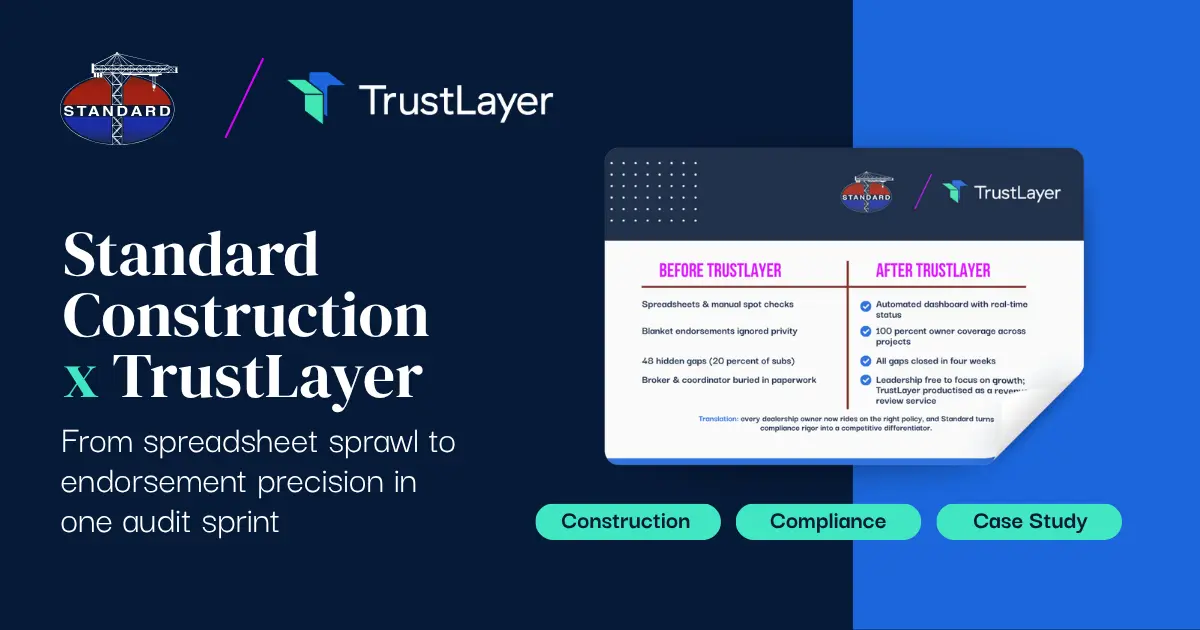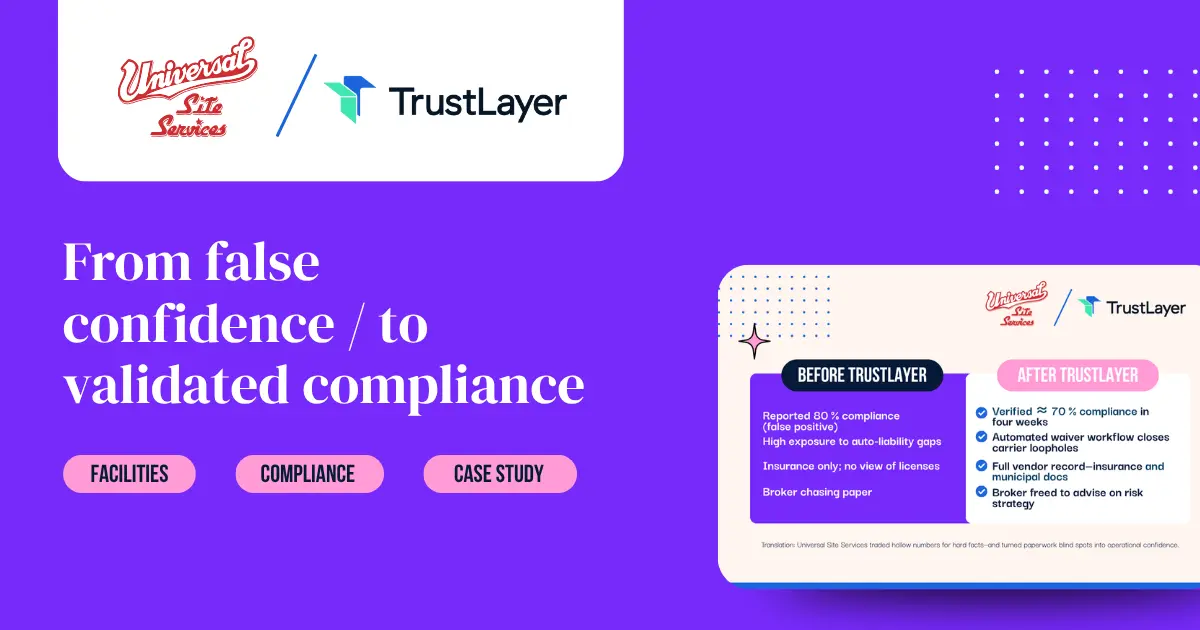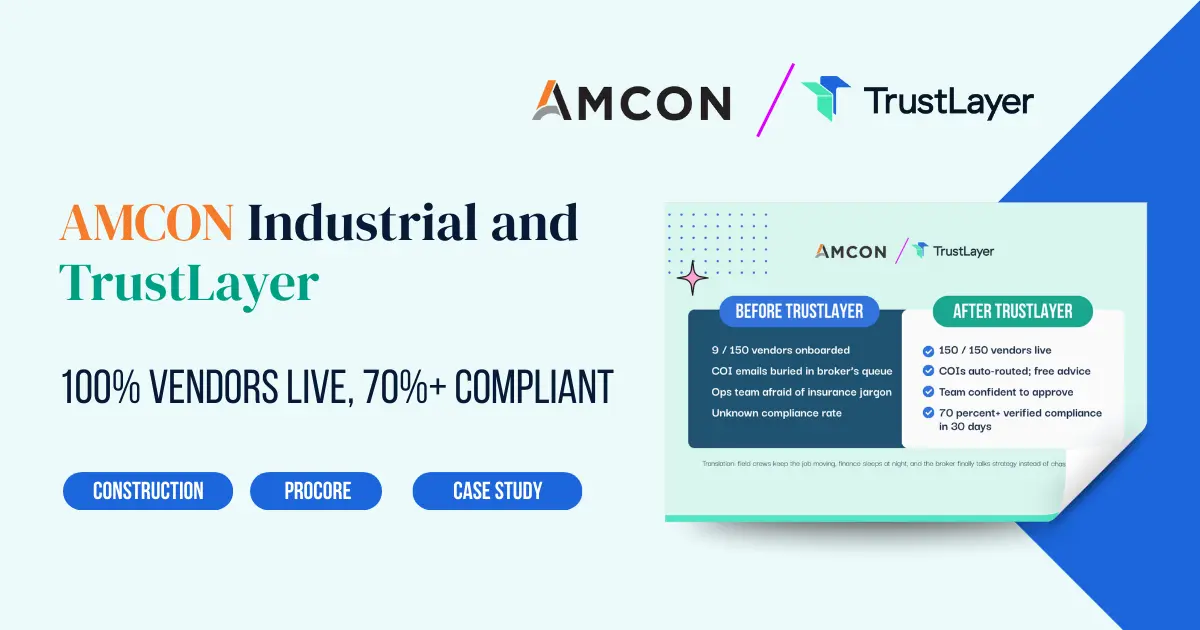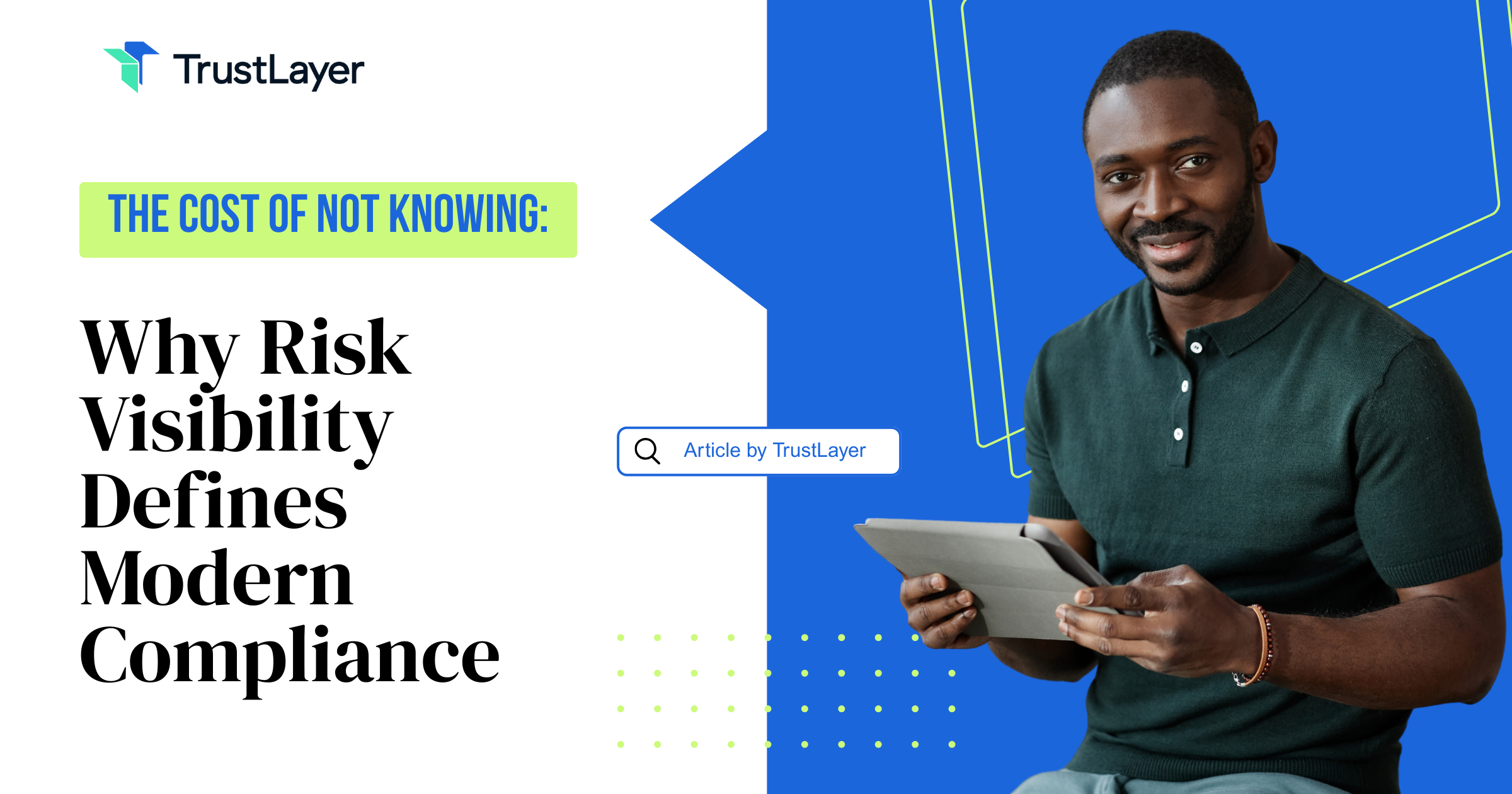Workers Comp Audits & COIs: The Expensive Mistake You Can’t Afford
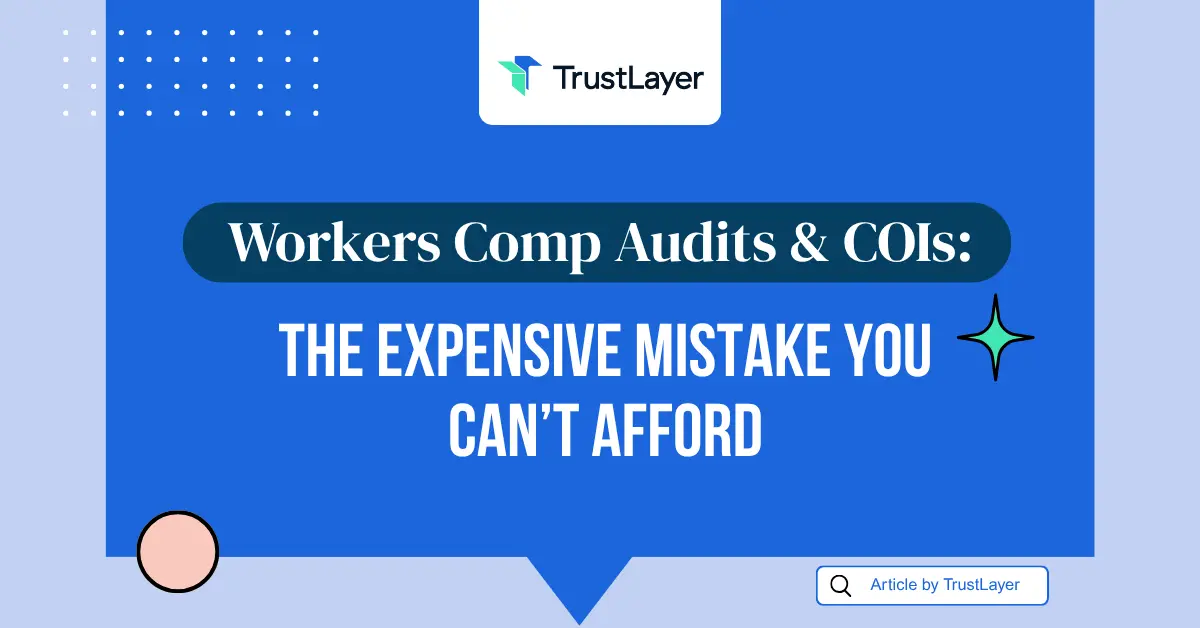
What Happens If You Don’t Have COIs on File for Subcontractors During a Workers' Comp Audit
Here’s a familiar story: the workers comp audit letter arrives, you’re already behind on three other things, and suddenly the auditor needs proof of subcontractor insurance.
You search your folders. Nothing.
Now your insurance carrier assumes that every subcontractor is your employee—and recalculates your premiums as if you’re paying their payroll.
The result? Massive rate hikes, surcharges, and sometimes, canceled coverage.
This isn’t exaggeration; it’s precisely how the audit math works.
The Real Cost of Missing COIs
When subcontractor COIs are missing or incomplete, your insurance carrier has no proof they’re insured. That triggers:
- Uninsured payroll assumptions: Every dollar you paid a sub counts as your payroll.
- Premium hikes of 25%–200% — sometimes hundreds of thousands in higher-risk industries like construction or manufacturing, depending on workers’ comp classification codes.
- Additional fees or non-compliance surcharges may apply if subcontractor payments are treated as payroll or if audit information is incomplete.
- Policy cancellation or refusal to renew.
- Liability for injury claims you never should’ve been responsible for, and the premium hikes that follow.
You don’t just risk penalties—you risk paying for claims you didn’t cause.
What to Look for on Every COI
Not every certificate proves compliance. To withstand audit scrutiny, each COI must provide clear, verifiable information.
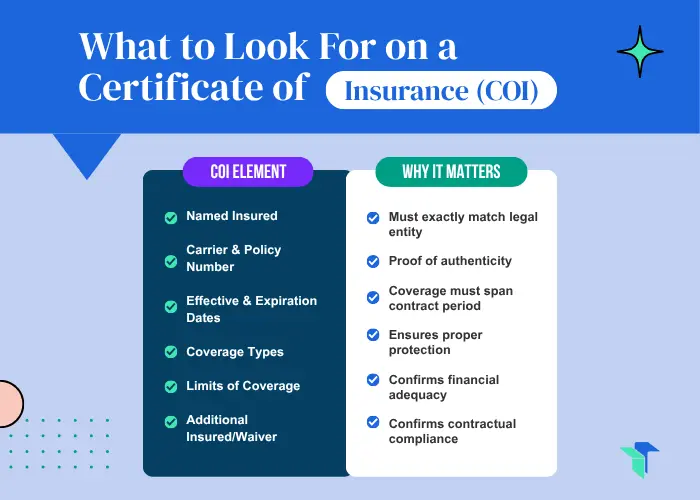
Best Practices for Tracking and Managing COIs
Manual tracking fails fast. One missed renewal and your audit exposure multiplies. Instead:
- Use COI tracking software to centralize documents and set expiration alerts.
- Automate the entire COI cycle—from initial collection to renewal requests and deficiency alerts—so compliance never depends on manual follow-up.
- Require valid COIs before any work begins.
- Keep a record of all requests and responses in case of audit disputes.
- Audit quarterly—roughly 70% of COIs have at least one error or omission.
Automation turns COI management from panic to prevention.
FAQ: COIs and Workers Comp Audits
Q: How often should I update subcontractor COIs?
At least annually—and always before a new project begins.
Q: Can I trust a broker’s email or verbal confirmation?
No. Only the actual certificate protects you during an audit.
Q: Do digital COIs count?
Yes, if they’re legible and verified. Store them in organized folders.
Q: What if a subcontractor refuses to give me a COI?
Don’t hire them. Without it, you inherit their payroll risk.
Final Word
Failing to track COIs isn’t a small mistake—it’s a financial time bomb. Every missing certificate compounds your liability, your audit costs, and your risk exposure.
The fix isn’t complicated. It’s consistent.
👉 Schedule a demo to see how TrustLayer automates COI management and helps your next workers' comp audit run clean.




